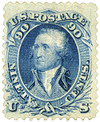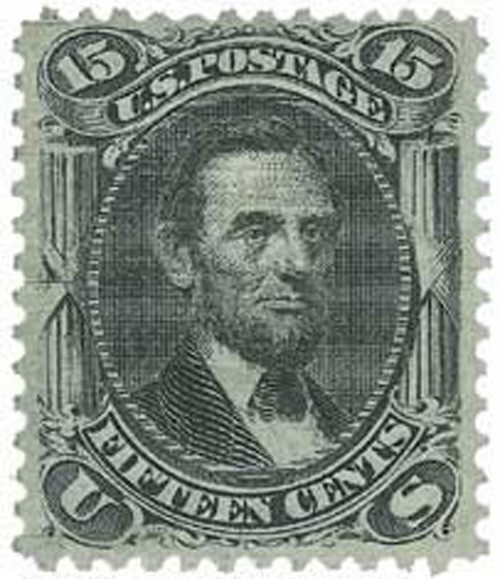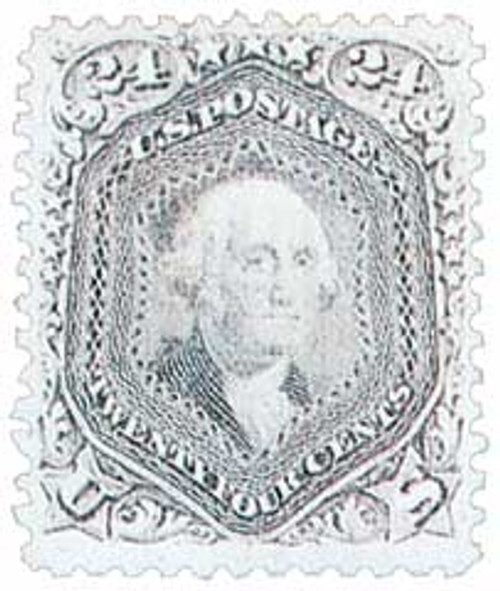
# 101 - 1867 90¢ George Washington, F-Grill, blue
Series of 1867 90¢ Washington
“F” Grill
Quantity issued: 30,000 (estimate)
Printed by: National Bank Note Company
Method: Flat plate
Watermark: None
Perforation: 12
Color: Blue
On September 29, 1789, Congress created the U.S. Army after multiple requests from President George Washington.
After the Revolutionary War, the Continental Army was largely disbanded, as the U.S. legislature believed that a standing army during peace time was dangerous and unnecessary. Some troops remained active to guard munitions and about 700 members of state militias were prepared to take on potential threats from Native Americans and the British.
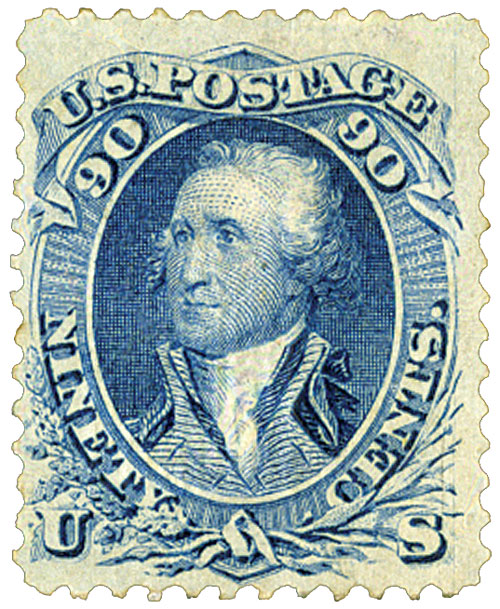
When the Constitution was ratified, Congress was given the power to raise and support armies. But they didn’t see this as a priority. During their first session, which began in March of 1789, they focused on creating the State, War and Treasury departments, a judicial system, and argued over where to establish the new capital.
However, President Washington saw the importance in creating an American army. On August 7, he wrote a letter to Congress urging them to make the creation of an army a priority. He said, “I am particularly anxious it should receive an early attention as circumstances will admit; because it is now in our power to avail ourselves of the military knowledge disseminated throughout the several States by means of the many well instructed Officers and soldiers of the late Army; a resource which is daily diminishing by deaths and other causes.” Even after Secretary of War Henry Knox read Washington’s letter aloud, no action was taken. Days later, Washington reminded them of his request.
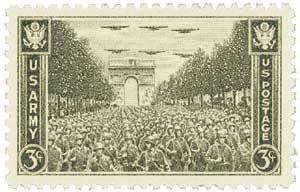
It wasn’t until over a month later, on the last day of the session, that Congress addressed Washington’s request. They passed a bill that allowed the President “to call into service, from time to time, such part of the militia of the states, respectively, as he may judge necessary.” Thus, the U.S. Army was born. And unlike before, states couldn’t refuse to send their men for service.
Series of 1867 90¢ Washington
“F” Grill
Quantity issued: 30,000 (estimate)
Printed by: National Bank Note Company
Method: Flat plate
Watermark: None
Perforation: 12
Color: Blue
On September 29, 1789, Congress created the U.S. Army after multiple requests from President George Washington.
After the Revolutionary War, the Continental Army was largely disbanded, as the U.S. legislature believed that a standing army during peace time was dangerous and unnecessary. Some troops remained active to guard munitions and about 700 members of state militias were prepared to take on potential threats from Native Americans and the British.

When the Constitution was ratified, Congress was given the power to raise and support armies. But they didn’t see this as a priority. During their first session, which began in March of 1789, they focused on creating the State, War and Treasury departments, a judicial system, and argued over where to establish the new capital.
However, President Washington saw the importance in creating an American army. On August 7, he wrote a letter to Congress urging them to make the creation of an army a priority. He said, “I am particularly anxious it should receive an early attention as circumstances will admit; because it is now in our power to avail ourselves of the military knowledge disseminated throughout the several States by means of the many well instructed Officers and soldiers of the late Army; a resource which is daily diminishing by deaths and other causes.” Even after Secretary of War Henry Knox read Washington’s letter aloud, no action was taken. Days later, Washington reminded them of his request.

It wasn’t until over a month later, on the last day of the session, that Congress addressed Washington’s request. They passed a bill that allowed the President “to call into service, from time to time, such part of the militia of the states, respectively, as he may judge necessary.” Thus, the U.S. Army was born. And unlike before, states couldn’t refuse to send their men for service.



